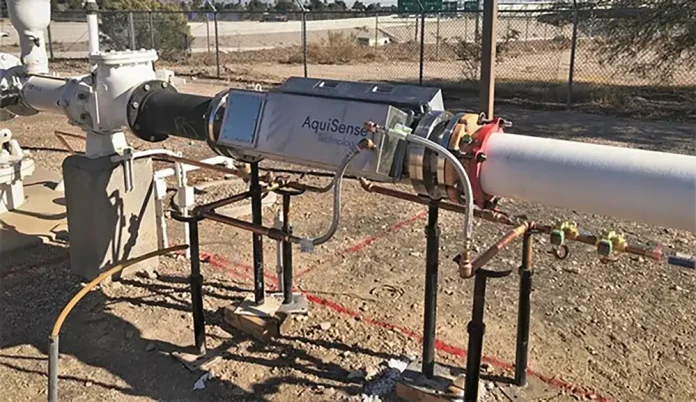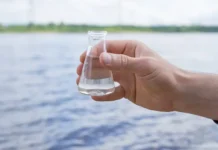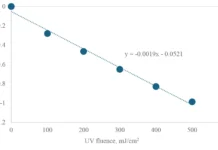Castine Bernardy, Ph.D. student, Department of Civil and Environmental Engineering, University of New Hampshire
Bailey Jones, MS Graduate Student, Department of Civil and Environmental Engineering, University of New Hampshire
James P. Malley Jr., Ph.D., professor of civil and environmental engineering, University of New Hampshire
The UV industry long has used mercury discharge lamps for water, air and surface disinfection applications. These lamps are most efficient when emitting UV light at 254 nm, which is close to the peak germicidal wavelength for most bacterial species. UV254 is close enough to the peak effectiveness that it causes significant damage to the bacterial DNA, rendering it inactivated.
UV disinfection systems employing low-pressure and medium-pressure mercury discharge lamps are the market-leading and well-proven tool for drinking water, wastewater and integrated water supply applications. Their use in drinking water has been growing rapidly since 2006 due to effectiveness for Giardia and Cryptosporidium inactivation. However, mercury lamps come with challenging disadvantages, the most significant of which is that they contain mercury. To mitigate the risks posed by mercury-containing lamps, research and development work has been advancing on UV LEDs. UV LEDs come with additional potential advantages, such as reduced cost of operation, no warm-up time, unlimited geometries for the applications of the sources and potential for increased energy efficiency.1 While UV LEDs are a promising advancement, they currently have a limited track record and have lacked a demonstrated ability to scale up to larger flows.
Validated full-scale (6 MGD) UV-C LED drinking water system
Many companies have been working on the development of UV LEDs for larger-scale One Water applications. In recent news, AquiSense Technologies was the first company to develop a UVDGM, validated, UV-C LED Municipal Water Treatment System for installation in North America. This technology is called “PearlAqua Tera” (Figure 1) and is being installed in the Las Vegas Valley Water District in the United States. The installation of this product began during early 2022.
This technology shares the advantages known to the LED market in that it will provide a high level of chemical-free disinfection at a low cost and without mercury bulbs. The Pearl Aqua Tera can treat flow rates up to 6 MGD.2 This technology is an exciting accomplishment for the UV-C LED industry and the One Water field, with all eyes upon it during its installation, start-up, operation and performance benchmarking. As with all firsts, it will move the industry forward and provide insights and lessons learned for future full-scale applications of UV-C LED technology in the One Water space.
PFAS One Water risk communication
Shifting focus from the technological side of the water sector to the customer side, notable developments in community communication are underway. The Water Research Foundation (WRF) started a project titled, “PFAS One Water Risk Communication Messaging for Water Sector Professionals” in August 2021 and is set to complete work on the project this year. This project involved the creation of fifth Unregulated Contaminant Monitoring Rule (UCMR5) and One Water-specific messaging materials for utility, communication and strategy teams, with the goal of keeping water systems a trusted source of information for customers.3 The messaging materials developed during this project will allow water utilities to have the necessary information to start a dialog with their customers and clearly respond to their questions.
PFAS WPA health advisories and the role of UV technology
PFAS occurrence, health effects, transport, fate and treatment have been some of the major topics of interest for all STEAM professionals working in One Water. This hot field became even hotter when US Environmental Protection Agency (EPA) issued draft health advisories on June 15, 2022, that were in the parts per quadrillion range and low parts per trillion range.4 A portion of the UV industry enthusiastically has turned its focus to ways UV technology may provide, either alone or in combination with other technologies, potential solutions to these emerging PFAS issues. Many ongoing research projects have been initiated to examine different UV wavelengths and look at UV-based AOPs. With most early research, these projects predominantly are at a small scale and have produced a variety of early and sometimes conflicting results. One project funded by SERDP-ESTCP, which is quite innovative and holds significant promise, is looking at UV-catalyzed advanced reduction processes that promote hydrated electrons to induce reductive defluorination and resulting destruction of PFAS compounds.5
AWWA Water 2050 initiative
The WRF isn’t the only nonprofit organization in the water sector with noteworthy news. In March of this year, AWWA announced its Water 2050 initiative. This effort seeks to establish a long-term vision of the future of water and chart a course for a successful sustainable water sector.6 AWWA is planning to achieve these goals using “think tanks” consisting of thought leaders from within and outside the water sector. These bright minds will shape future work supported by this initiative through discussion of five forces driving the future of water, as identified by AWWA: sustainability, technology, economics, governance and social/demographic.
While these thought leaders will play a key role in the future of the industry, those outside these “think tanks” still may progress their field by presenting at ACE 2023. AWWA has sent out a call for abstracts to be considered for a presentation at the conference.
References
- Allied Scientific Pro. (2021). Retrieved from Introduction and Comparison Study Between UV-LED and UV Mercury Discharge Lamp: https://www.alliedscientificpro.com/blog/welcome-to-our-blogs-1/post/introduction-and-comparison-study-between-uv-led-and-uv-mercury-discharge-lamp-uvmdl155#:~:text=The%20UV%20LED%20will%20have,over%20the%20mercury%20discharge%20lamp%3A&text=UV%20LEDs%2
- AquiSense Technologies. (2022). AquiSense Technologies. Retrieved from AquiSense NEWS: https://aquisense.com/aquisense-installs-pearlaqua-tera/
- The Water Research Foundation. (2022). PFAS One Water Risk Communication Messaging for Water Sector Professionals. Retrieved from The Water Research Foundation Project list: https://www.waterrf.org/research/projects/pfas-one-water-risk-communication-messaging-water-sector-professionals
- https://www.epa.gov/sdwa/drinking-water-health-advisories-pfoa-and-pfos
- https://www.serdp-estcp.org/Program-Areas/Environmental-Restoration/Contaminated-Groundwater/ER22-3298
- American Water Works Association. (2022). Water 2050. Retrieved from American Water Works Association Resources & Tools: https://www.awwa.org/Resources-Tools/Water-2050#12684712-drivers
The One Water column seeks to highlight the application of UV technologies to the traditional areas of drinking water, wastewater, water reuse, agricultural and industrial process water, and stormwater. The goal of the column is to further evolve understanding and focus, driven by YP members, on sustainable water – reminding stakeholders that there is one water cycle on earth.
Contact: Castine M. Bernardy, castine.bernardy@unh.edu; Bailey Jones, bailey.jones@unh.edu; James P. Malley Jr. Ph.D., professor of civil and environmental engineering, jim.malley@unh.edu






